Birds as Time Tellers
I realized one day in late winter that I was a legitimate bird nerd. I didn’t care that there was still snow on the ground, or that the limbs of the trees were still so barren that they more resembled the human vascular system than they did oak and ash specimens. It didn’t bother me that the temps were holding steady in the 40s well into April. I was looking out my kitchen window hoping to see that first real sign of spring: the return of tree swallows from their South and Central America wintering home, to our home. All I cared about was when certain birds would return home for the spring and summer. Seeing the diminutive hummingbird is also cause for joy. When you start to tell the changes of seasons based on the feathered friends appearing in your yard and garden (or yarden), that is when you know you have reached the level of bird nerding. And it is a wonderful feeling!
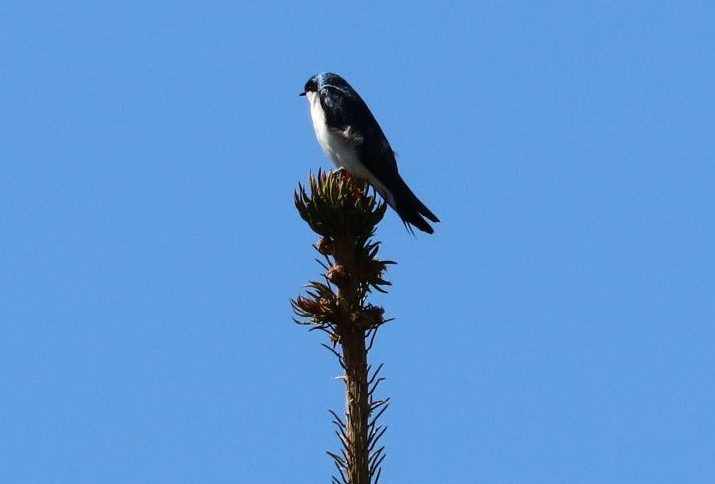
Tree Swallows Returning from Central America is a First Sign of Spring for Us
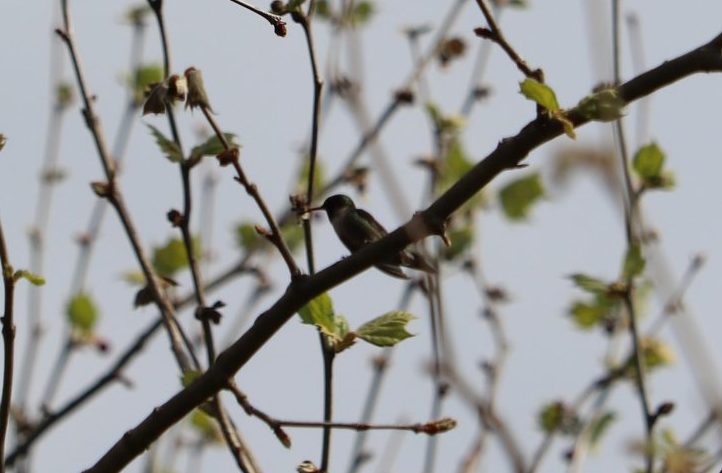
Ruby-Throated Hummingbirds Return to New Jersey as Early as April
I later wonder the exact same thing in mid to late fall. When will the dark eyed juncos appear from their summers in Canada? And what about the white-throated sparrow? With their adorable song that is unmistakable in the cool winter air: “O-oh sweet Canada, Canada, Canada”. I am not an ornithologist so I don’t know how birds know it’s time to migrate, but I do know that I am very fond of their appearance on my property, and find joy in their song, beauty, and funny antics. I mean, really, how many times a day must a catbird splash about in the water? And most times, I appreciate their natural ability to begin singing before sun up. They really have an amazing internal song clock when it comes to twilight. It wakes me at dawn, and signals me at dusk to wind down.
The area surrounding our home wasn’t always here for the birds, nor do we always hang feeders out for them either. However, the birds were here first. When our house was built twenty years ago, there is no doubt that more birds flew about than do now. Which is sad, because bird populations are on the decline. We have tried our very best to make sure we provide the types habitat they need and we have added plantings all around our property.
Birds Are A Lot Like Us
While we have added various plantings around our home that are what they need, we have also removed some that provide no purpose at all. Plus we enjoy their company immensely. And yes, we do put out feeders, but that is not a sole source of food. (The tree swallows and the robins never go near it for example, because they don’t eat seeds). And sometimes we see a new bird for the first time have a go at our land. It’s like Christmas morning for me when that happens. This year we had a yellow-rumped warbler pass through. Our home wasn’t his final destination, but it was still a delight.
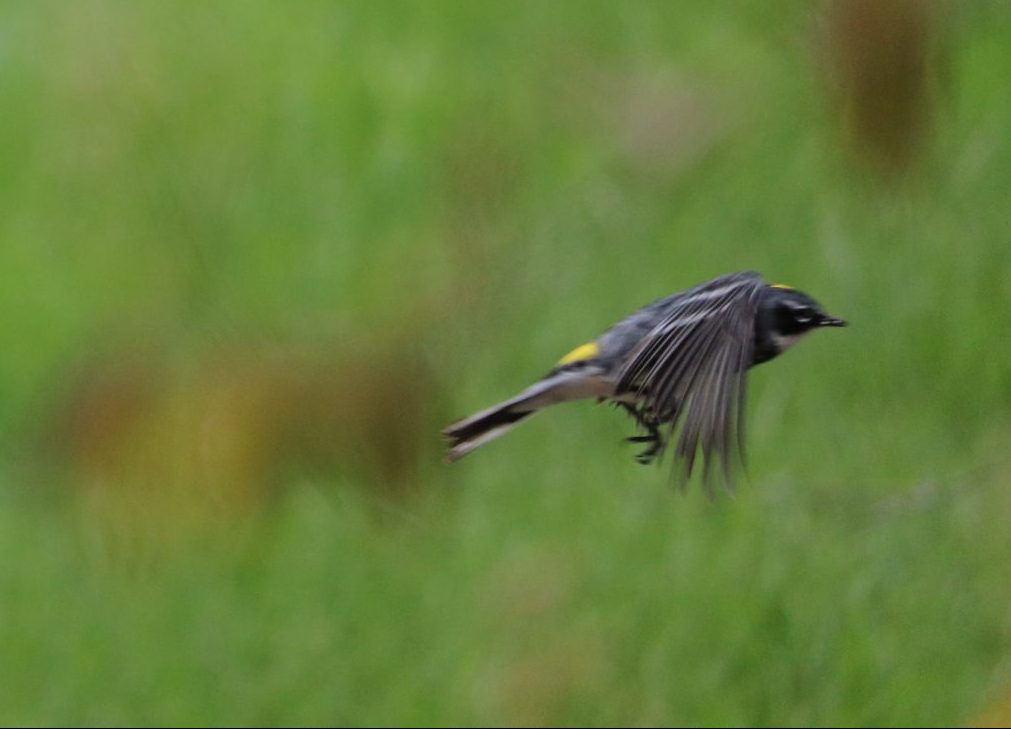
Yellow-rumped Warbler Stopped By
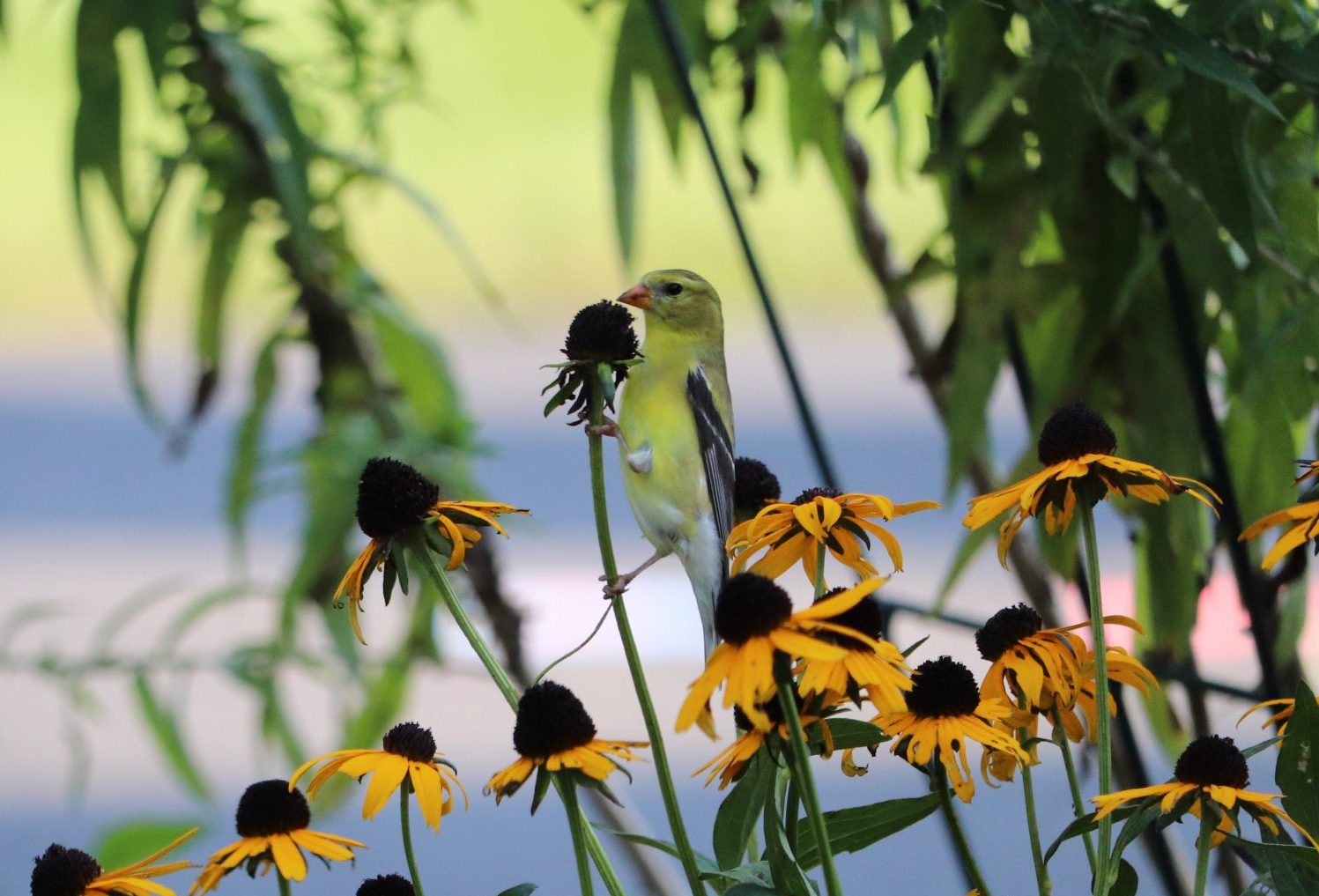
Goldfinch picking seeds in late summer from our flower bed
Birds are not unlike ourselves in terms of what they need to survive: water, food and shelter. It’s that simple. If you provide berry-producing shrubs and trees, then birds can’t help but call your place home. But what exactly do birds eat? And how come if I do put out feeders I usually only see chickadees, blue jays, cardinals, and that small white and gray bird with a pointed beak that always moves up and down the tree trunks constantly with his/her pal. (It’s a nuthatch by the way and they are monogamous!)
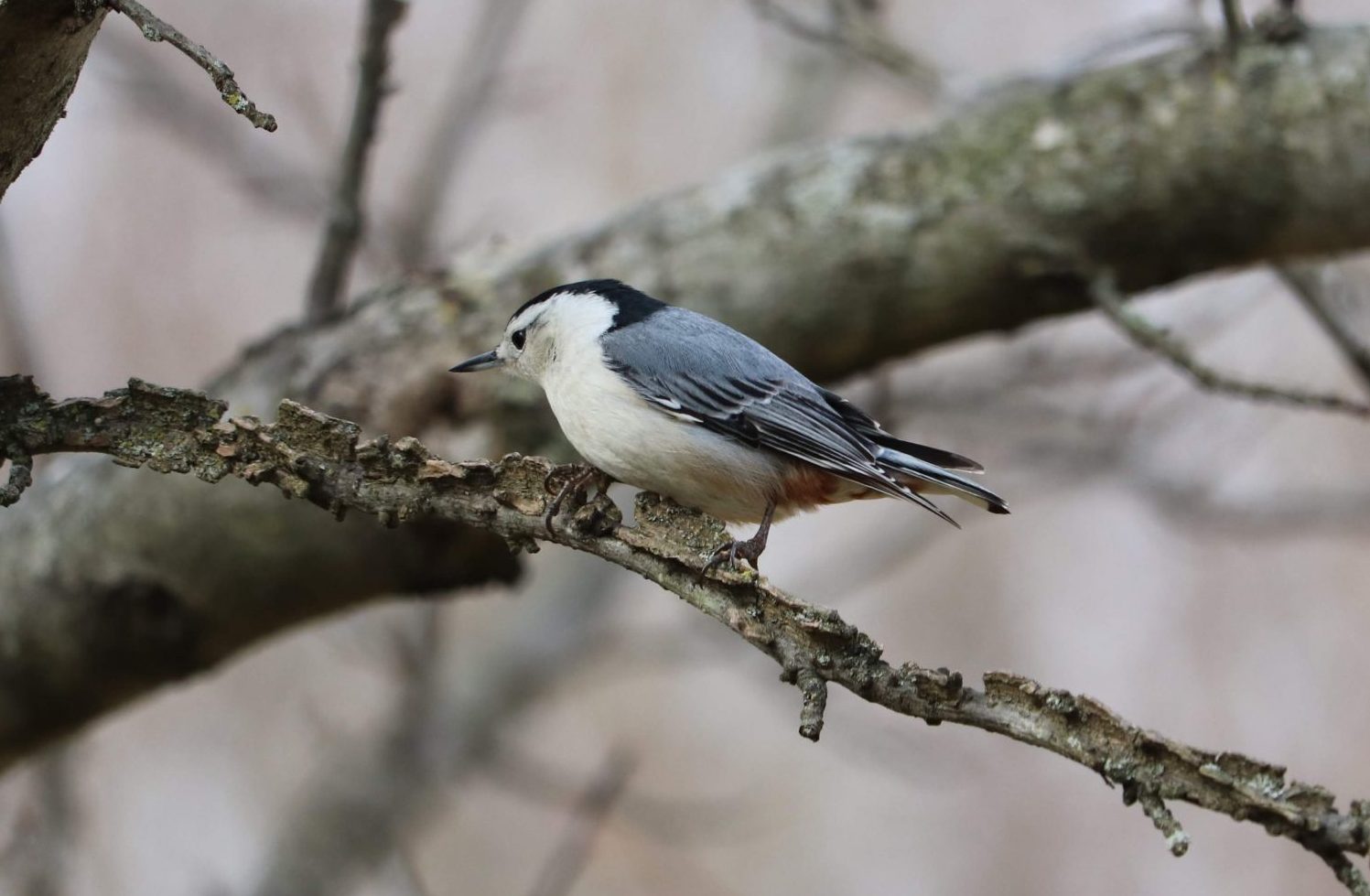
White-breasted Nuthatch
Well, here again, birds are a lot like humans. Some are fish eaters, some prefer meat (like owls for example) and some are strictly nut and berry eaters, almost like vegetarians of the bird world. And there are even some who are strictly aerial insectivores, catching their food nearly in mid-air, similar to the way bats eat.
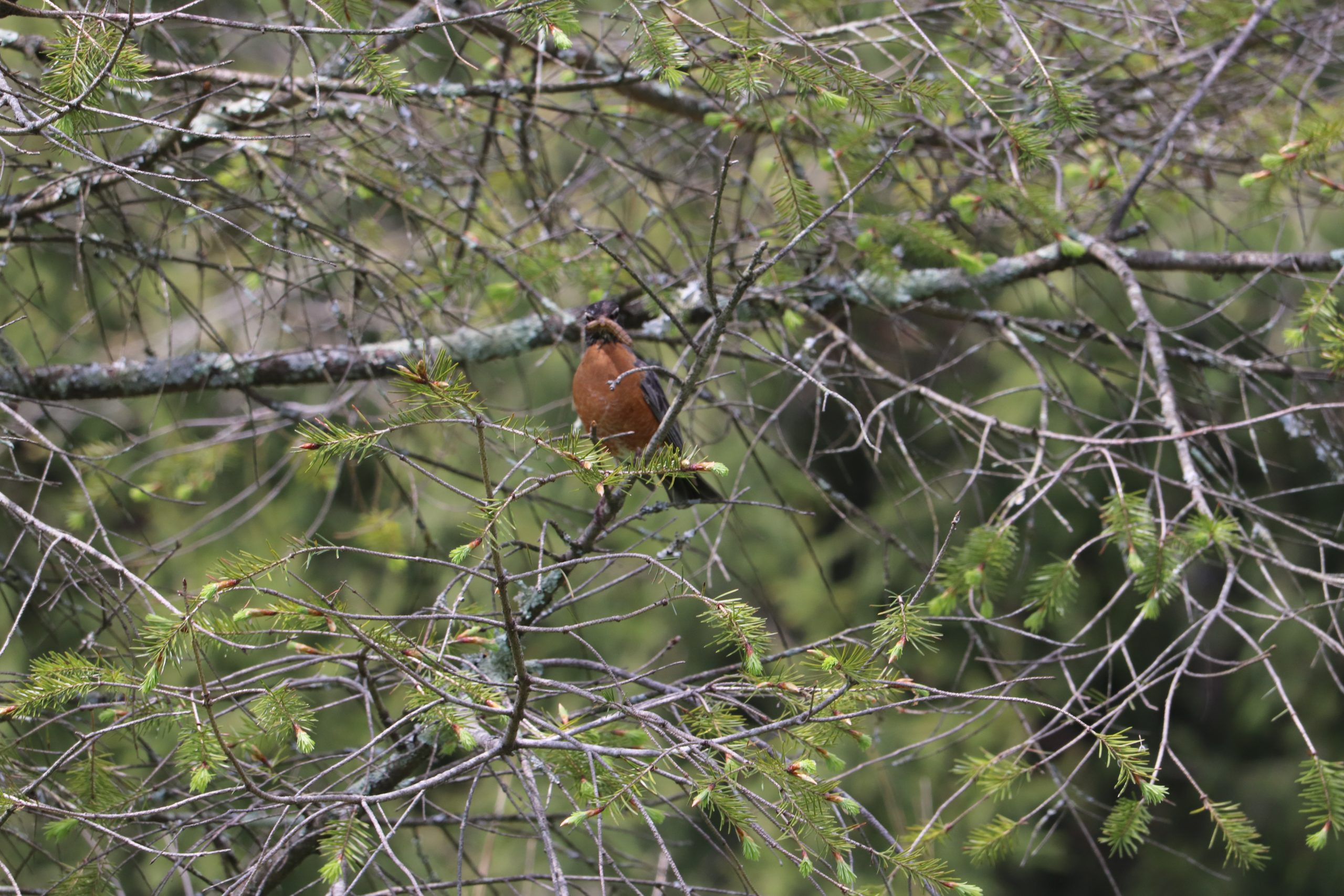
The American Robin Does Not Eat Bird Seed
Without knowing the exact diet of every single type of bird, one of the best ways to immediately notice what birds eat what, is to notice the shape of their beaks. Cardinals and finches for example have short thick beaks, perfect for cracking seeds. While woodpeckers’ beaks are pointed and sharp, perfect for pecking holes in old wood to forage for insects. While swallows, fly catchers and Eastern kingbirds have short, small beaks, but amazing aerial acrobatics, perfect for taking insects in mid flight! And of course the unmistakable hooked beak of hawks, falcons and eagles tell you that they eat mainly live prey. (But have been known to eat carrion as well.)
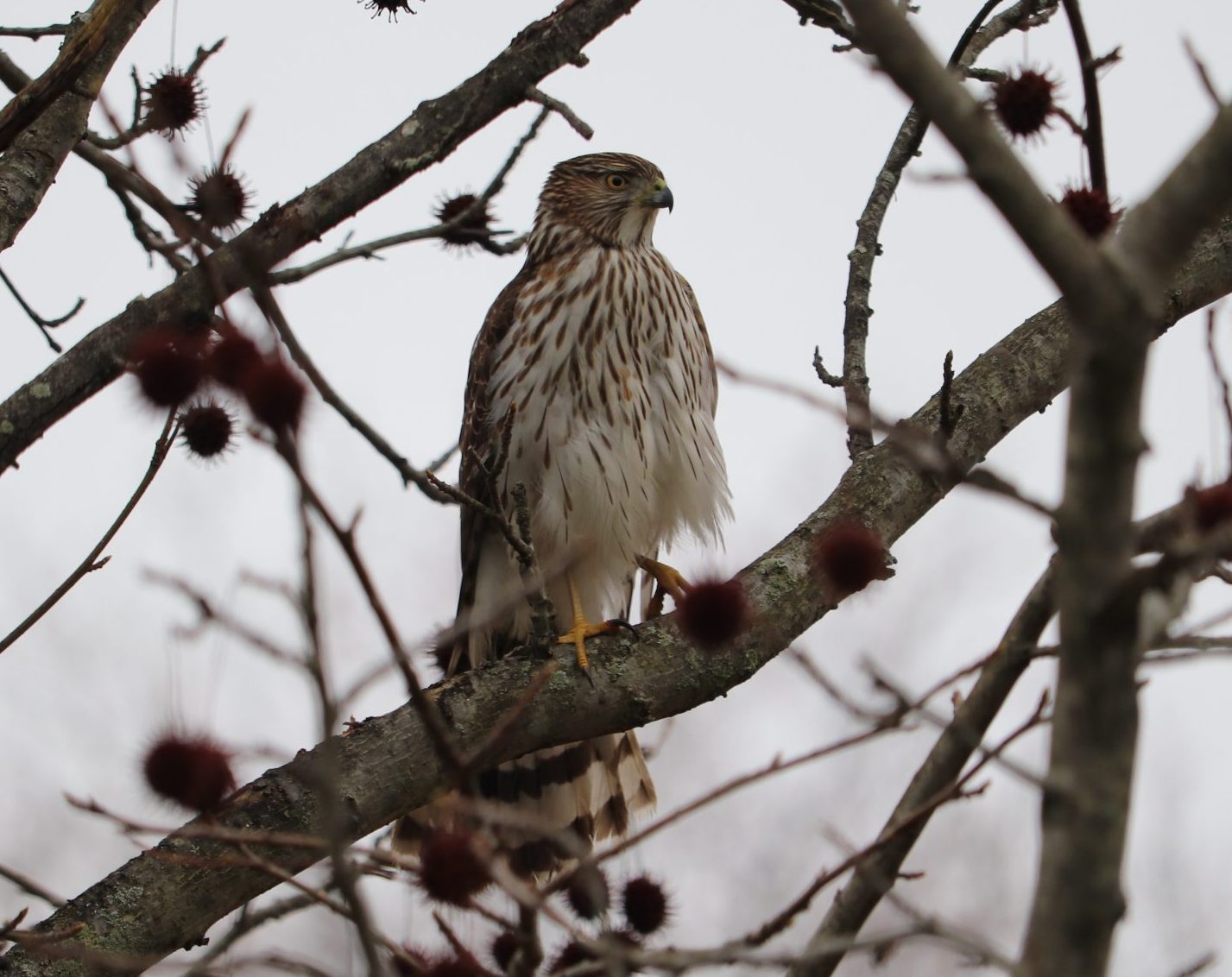
Coopers Hawk or a Juvenile Sharp-Shinned Hawk? Hard to Tell
So How Do I Garden for Birds?
There are several options you can plant to attract birds to the area in which you live as well as providing adequate nesting sites for them. I can’t make insects fly in my yard to attract tree swallows. But, I can strategically place nest boxes in an area that is irresistible to them to rear their young. They have trees to sit on top of, and they have a large meadow to soar above catching insects from early April through September. Needlesstosay, we don’t have a Japanese beetle problem! We live in the Northeast and therefore may have different birds than someone in Colorado or Arizona. But the important thing to remember when gardening for birds is to avoid exotics and non-native plants. While some animals have adapted to eating and foraging on plants and trees that are not native to the area, it is not advised. Always Always Always plant native species. Why? Many birds have adapted to eating the fruits and foraging off of non-native plants. However, the protein-rich diet that their offspring require and the high-caloric content food they need before migration are not found in non-native plants such as Japanese barberry.
Including a kestrel box that is still unoccupied, but we remain hopeful, we have nine nest boxes on our property. From April through early July, they are a flurry of activity. It is a joy to watch and seeing the natural world come to life literally in our own backyard is a thrilling spectacle.
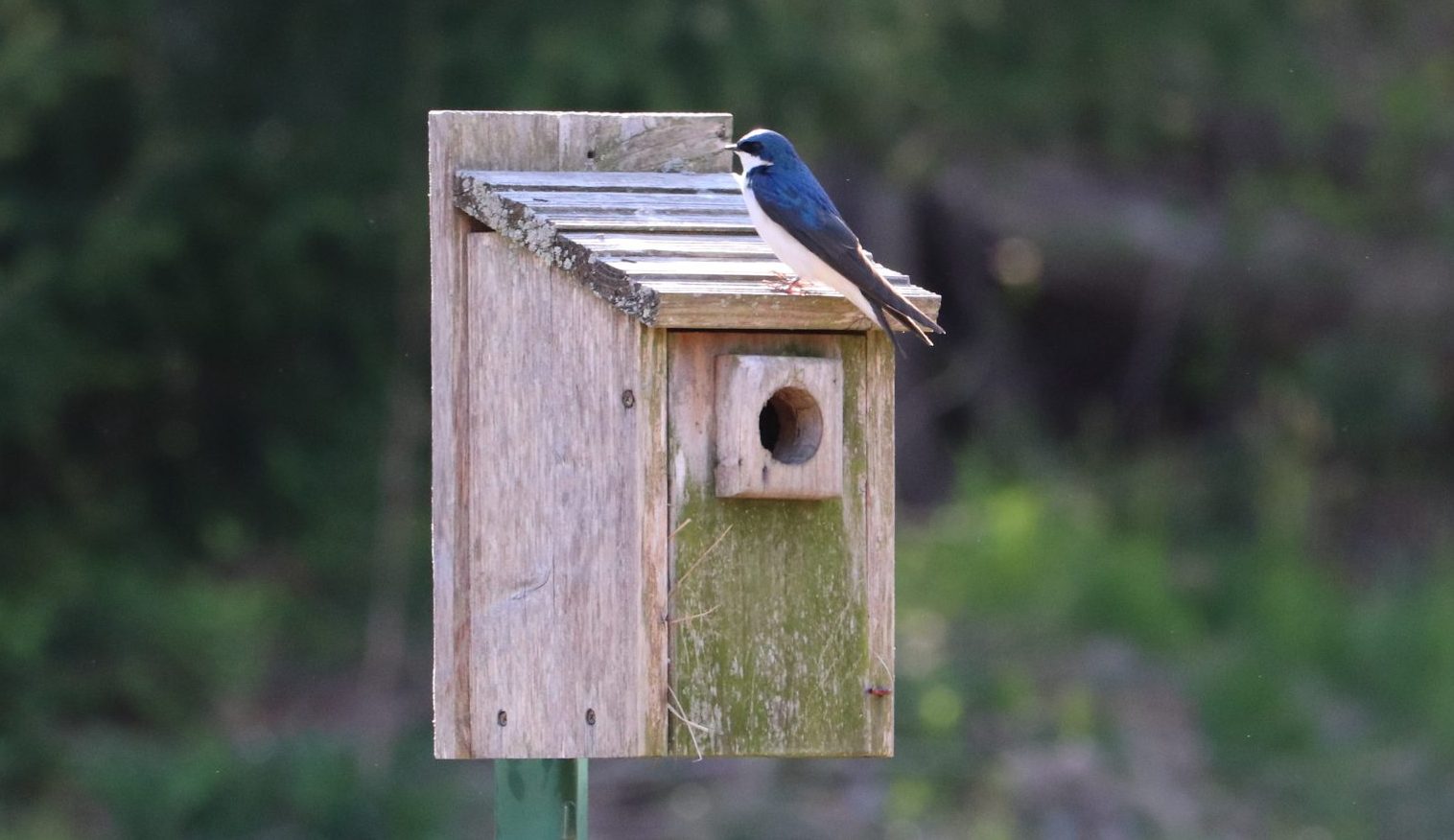
Tree Swallows and Eastern Bluebirds are Happy to Nest Next to Each Other
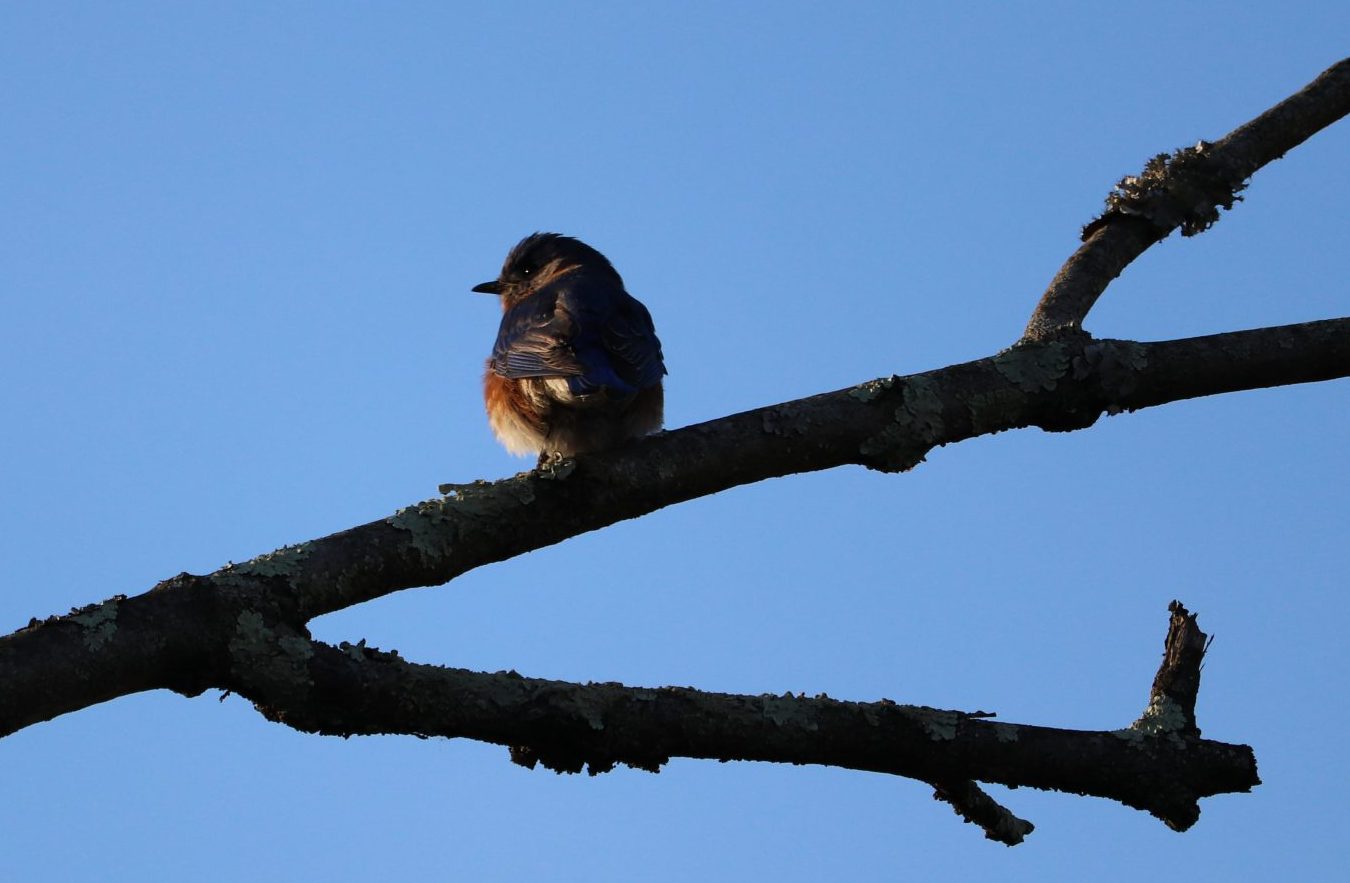
Eastern Bluebird
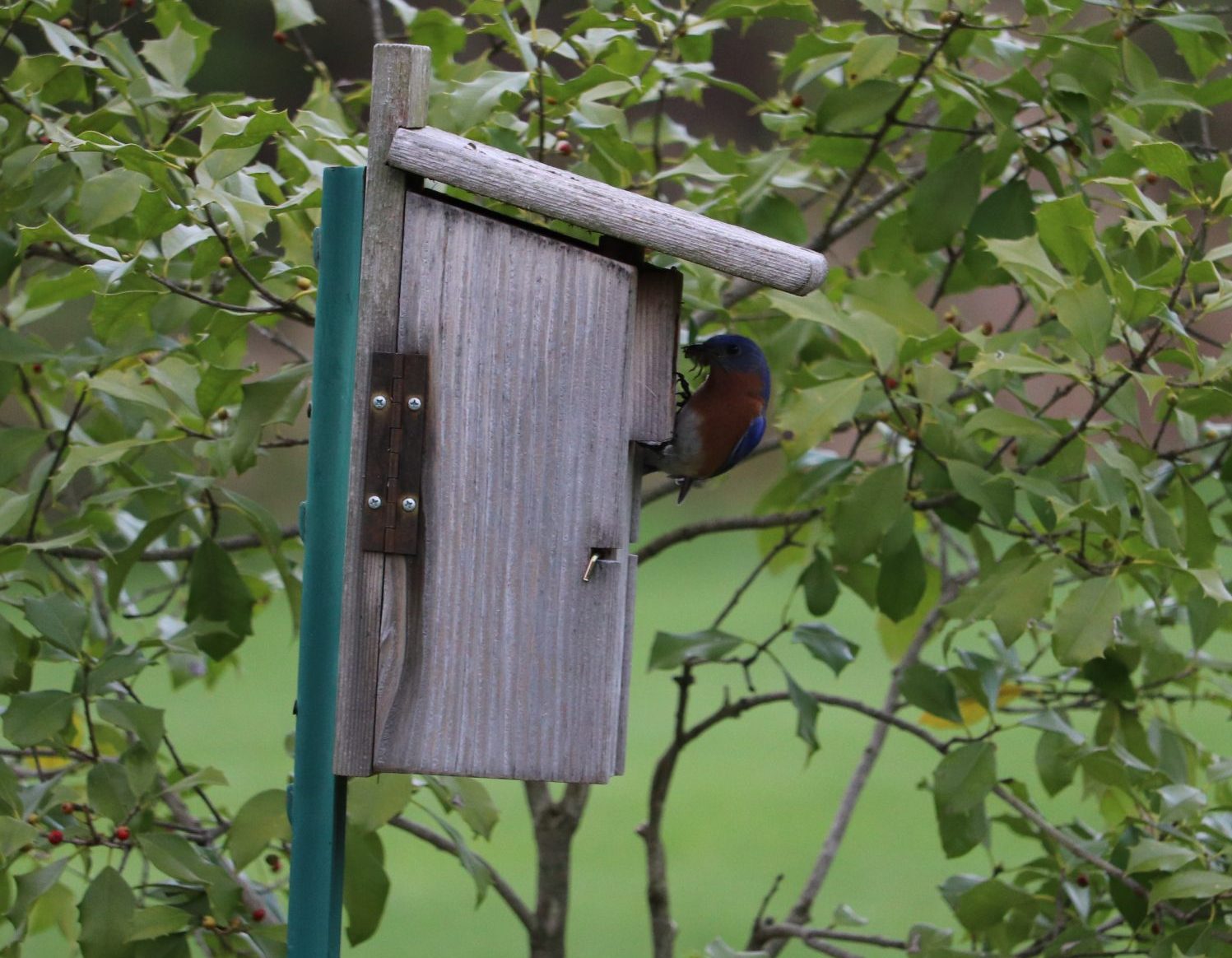
Eastern Bluebird Feeding Their Young
I don’t have raspberry bushes or blackberries growing on our property (though it would be nice). But I do have three serviceberry trees which the cedar waxwings, catbirds, and even the robins find irresistible during the month of June. It is also referred to as the June berry tree. It’s scientific name is Amelanchier canadensis and it’s a beautiful small ornamental tree (20 to 25 ft.) that has an airy appearance and gorgeous fall color. Small delicate white flowers in very early spring turn into small but tasty June fruit. It is native to the Northeast, and it is attractive to over twenty different species of birds! We do have one small blueberry bush. We get about nine blueberries a year out of the probably two hundred it produces. The gray catbird is a very sneaky little bird and they seem to polish off the bush with ease every year. (I recently found out it’s probably the same bird! Catbirds tend to return “home” to the same nesting areas as the year before).
Gardening For the Seasons
The majority of plants produce fruit or seed in late summer to fall. Which can either be time to migrate or time to prepare for the winter for most birds. The birds we see in our property are most often found on the viburnums, the asters, the cone flower, red twig dogwoods and the elderberries at the end of the summer. While in June, the service berry trees are covered in birds! While over winter, our birds can forage for seeds on the winterberry holly and the eastern red cedars’ juniper berry or even our ink berry holly.
In the summer I see birds foraging up and down tree trunks and picking at the catkins of our birch and hop hornbeam trees. A fringe tree we recently added is also a great food source. And I love the amazing scent the tree has on its flowers in spring. Chokeberry and is another native shrub we recently added to our landscape for birds. It has a funny name, but the fruit can persist into the winter months.
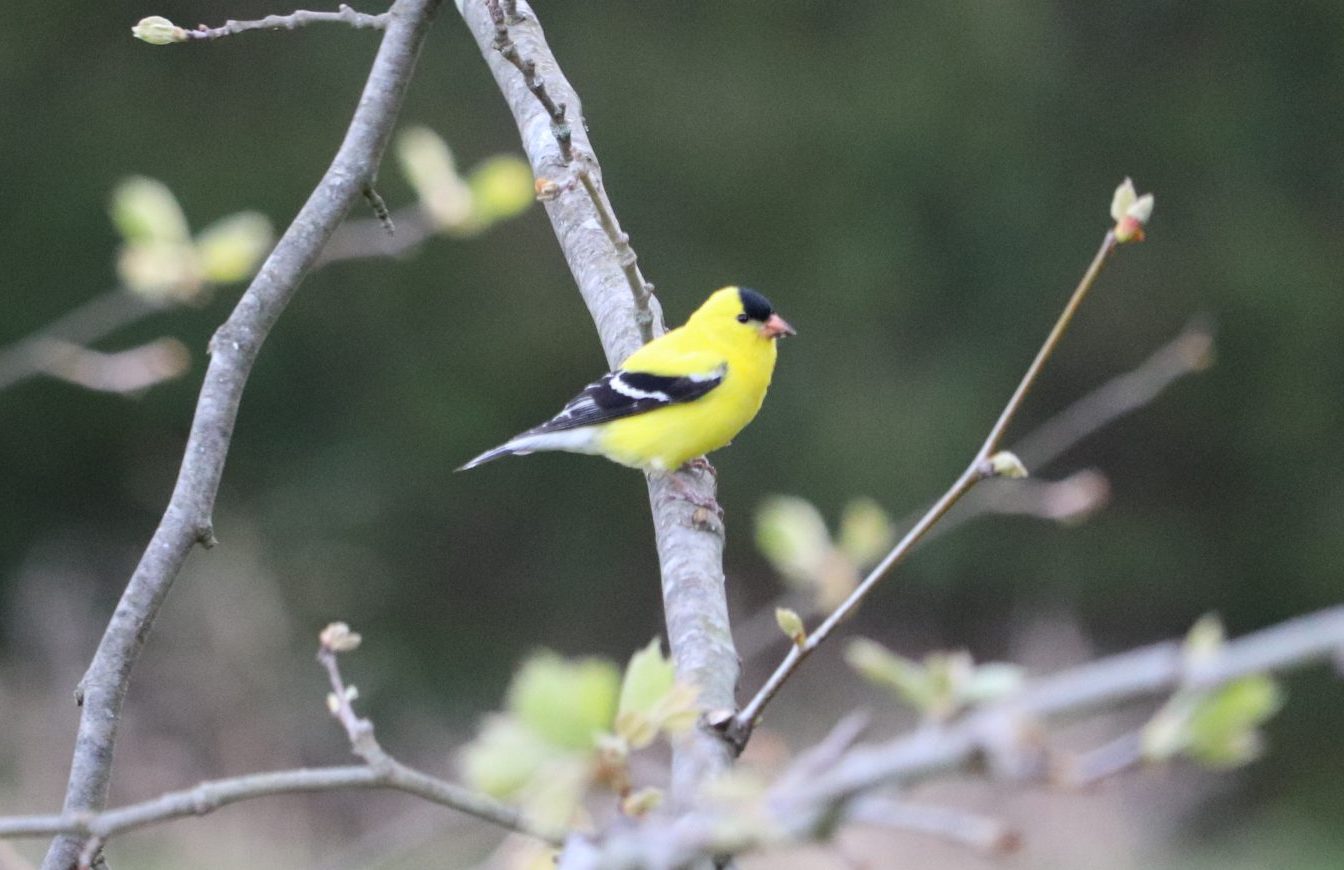
Goldfinch in Spring
Birds Bring Life to a Landscape
Somewhere along the way, there is a pine tree on our property that was named “The Tree of Life”. I think our 8 year old got the name from the Disney series “The Lion Guard.” This tree is fairly large and I am pretty sure it is a Douglas Fir (we didn’t plant it, it came with the house). There is not a moment of the day that something isn’t landing on it, flying in it, or foraging on the branches. There must be hundreds if not more caterpillars, and so many birds!!! Even though the tree blocks the view of our wildflower meadow from our kitchen window, we don’t dare cut it down. There is so much life living in it!
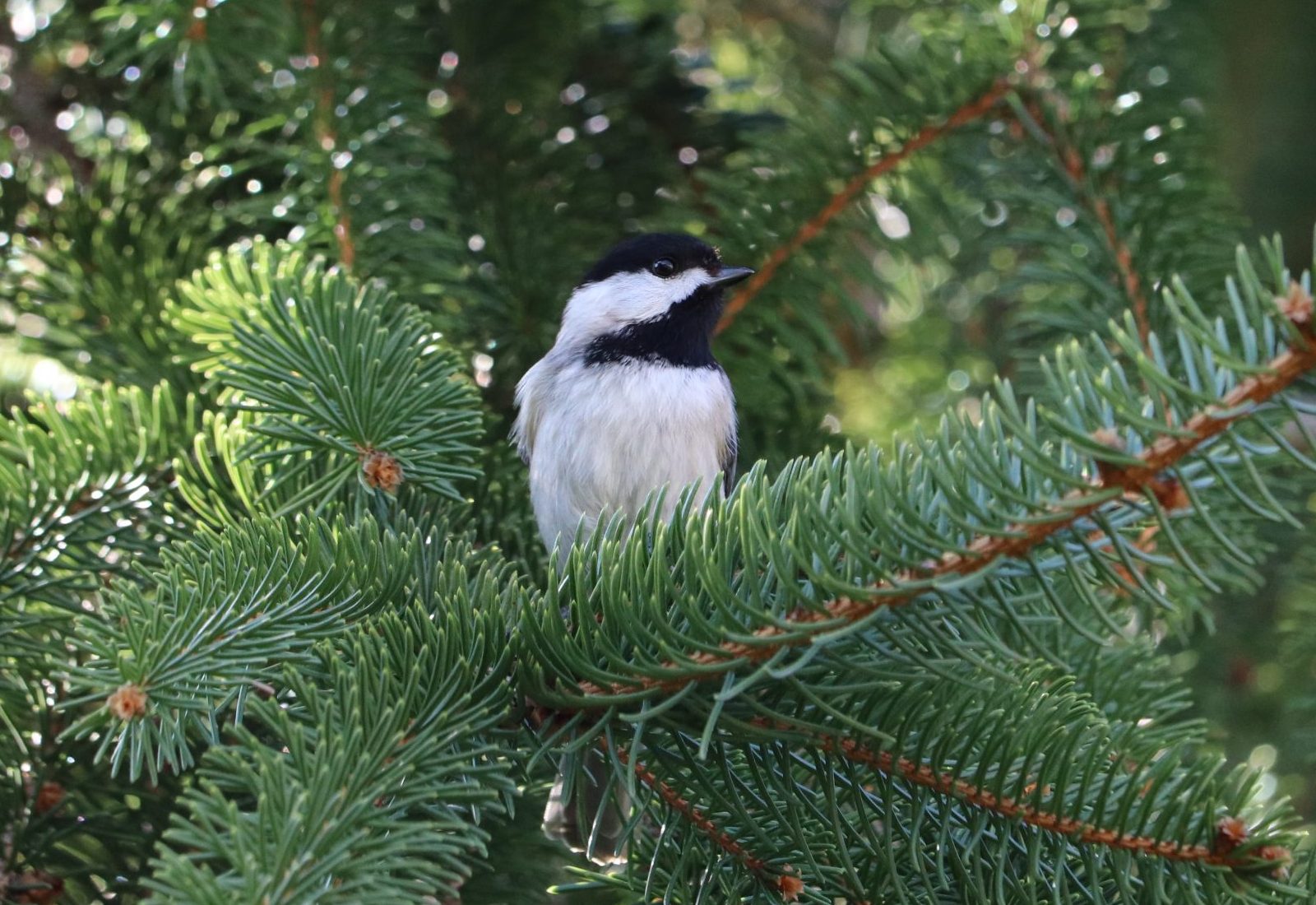
Black-capped Chickadee on the Tree of Life
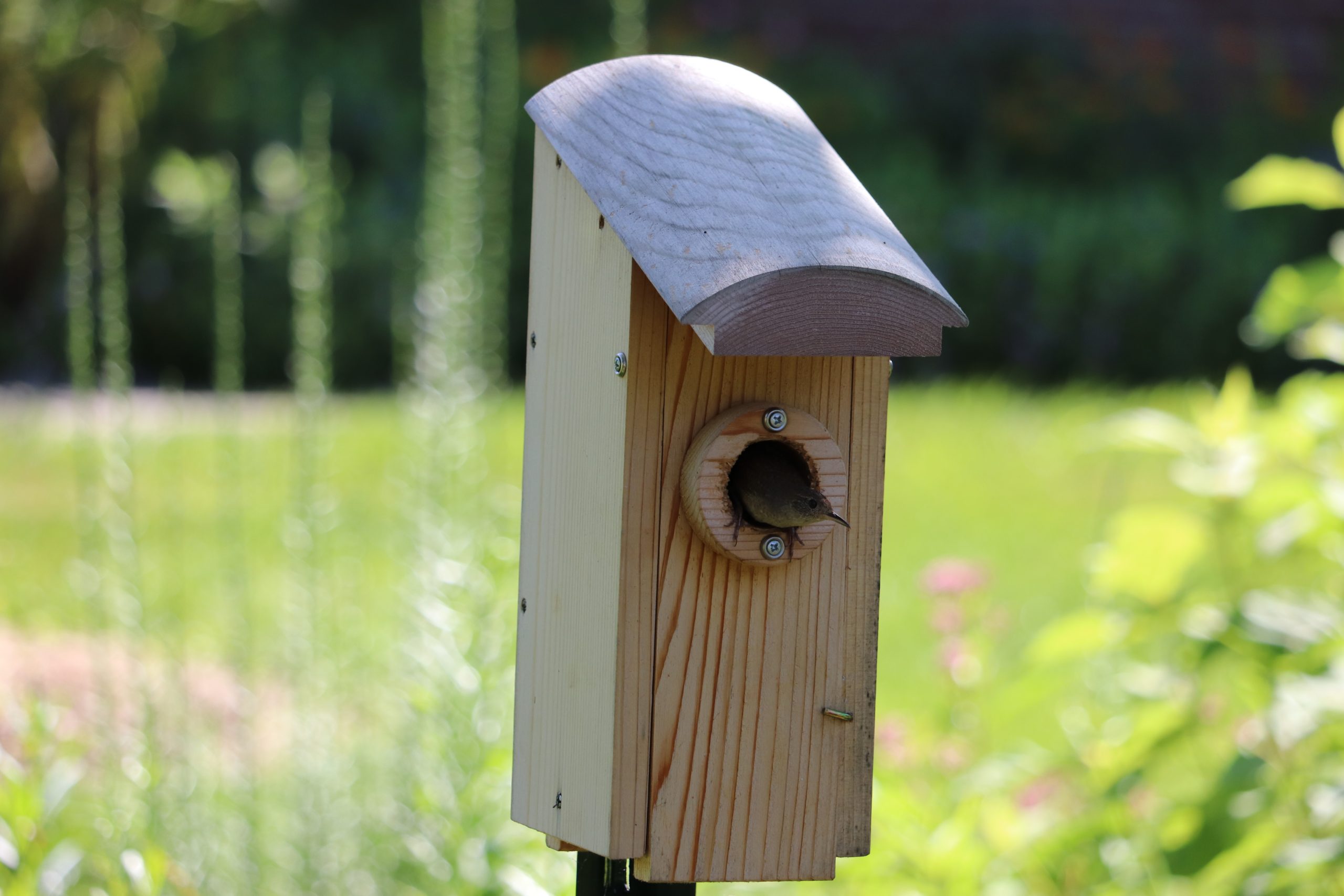
TIny House Wren with a BIG Voice
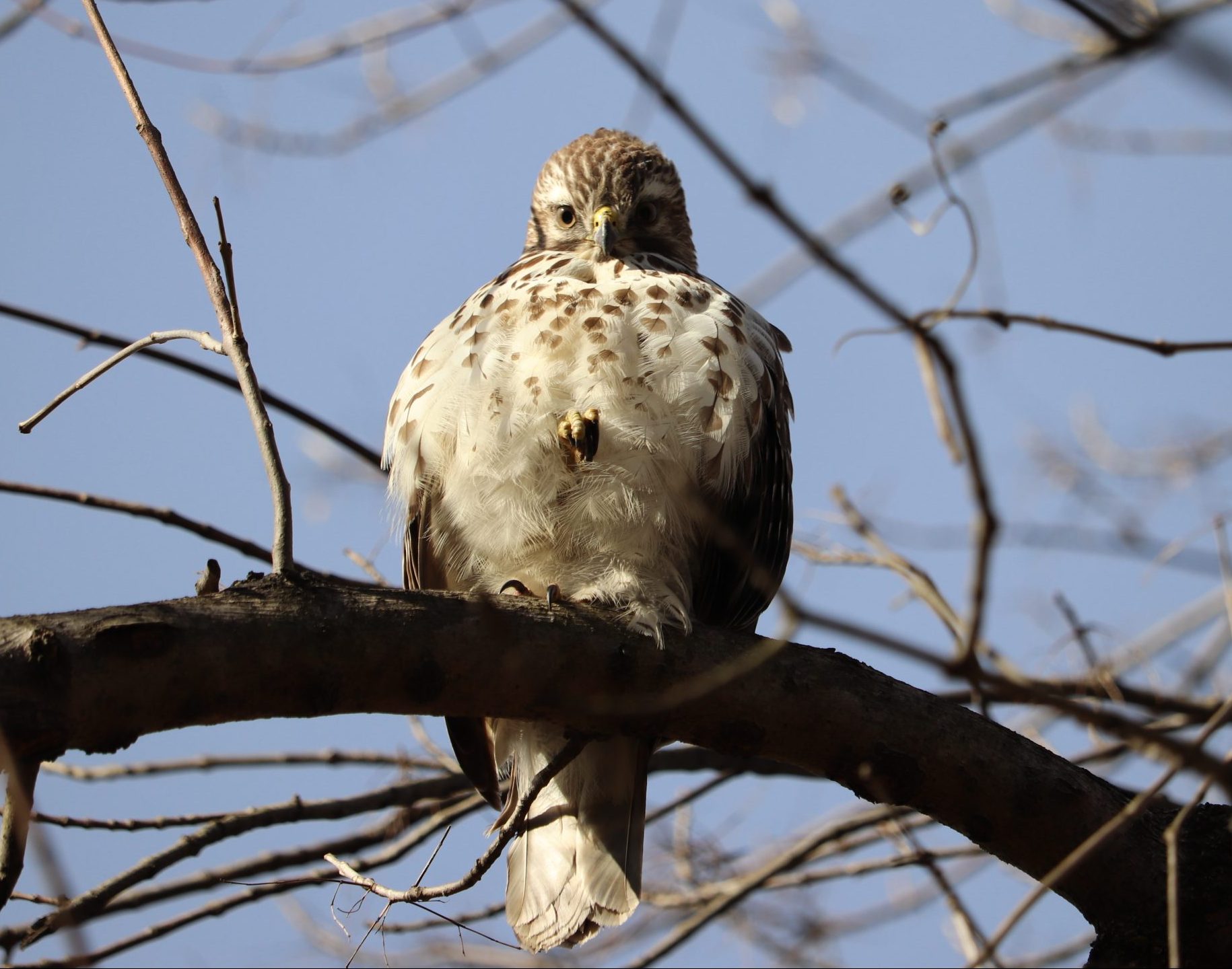
Juvenile Red-Tailed Hawk Watching my Every Step
Sometimes we birders get really excited. I saw a Baltimore oriole for the first time in one of our sycamores, and I practically didn’t sleep that night. This spring, I saw the Eastern towhee just feet from my front door. But never again. I only hear him now. “Drink your teeeaaaaaa” is the towhee’s signature sound and I hear it often in summer across the meadow. But they are a ground nester, and as such prefer a forest floor with plenty of places to hide. I am happy to get to hear their lovely song, even if they do have to nest elsewhere.
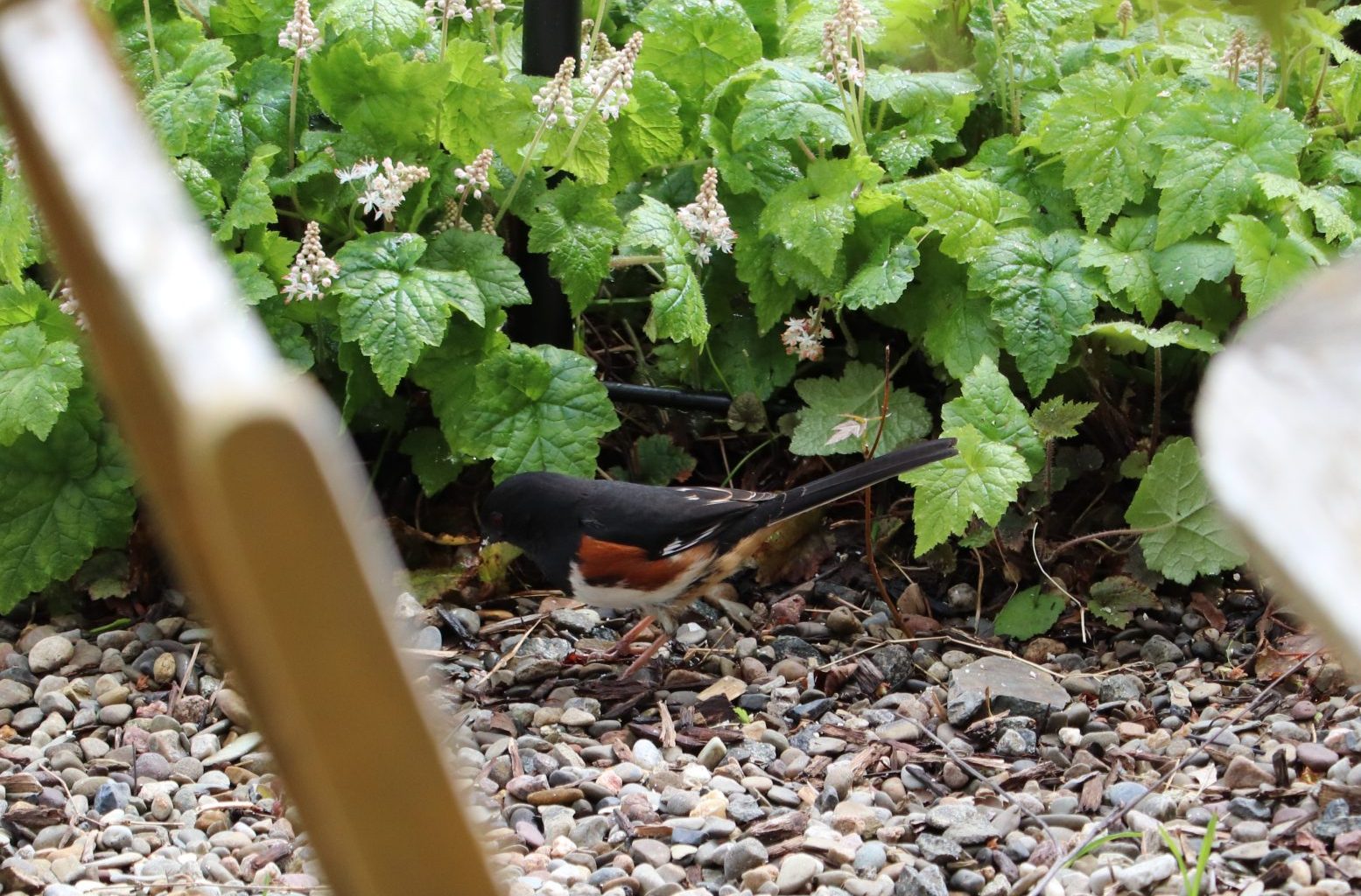
Eastern Towhee
So, you are welcome to hang a few bird feeders in your yard. You will no doubt see a colorful array of avian visitors to brighten your day. But remember, you won’t see the proliferation of species if you don’t provide what they need. For example, you probably won’t be seeing the eastern kingbird or the pileated woodpecker at your feeders. And don’t forget a water feature. Our catbirds take numerous dips a day. It is a sight that brings joy, even though we have no clue why catbirds take so many water baths.
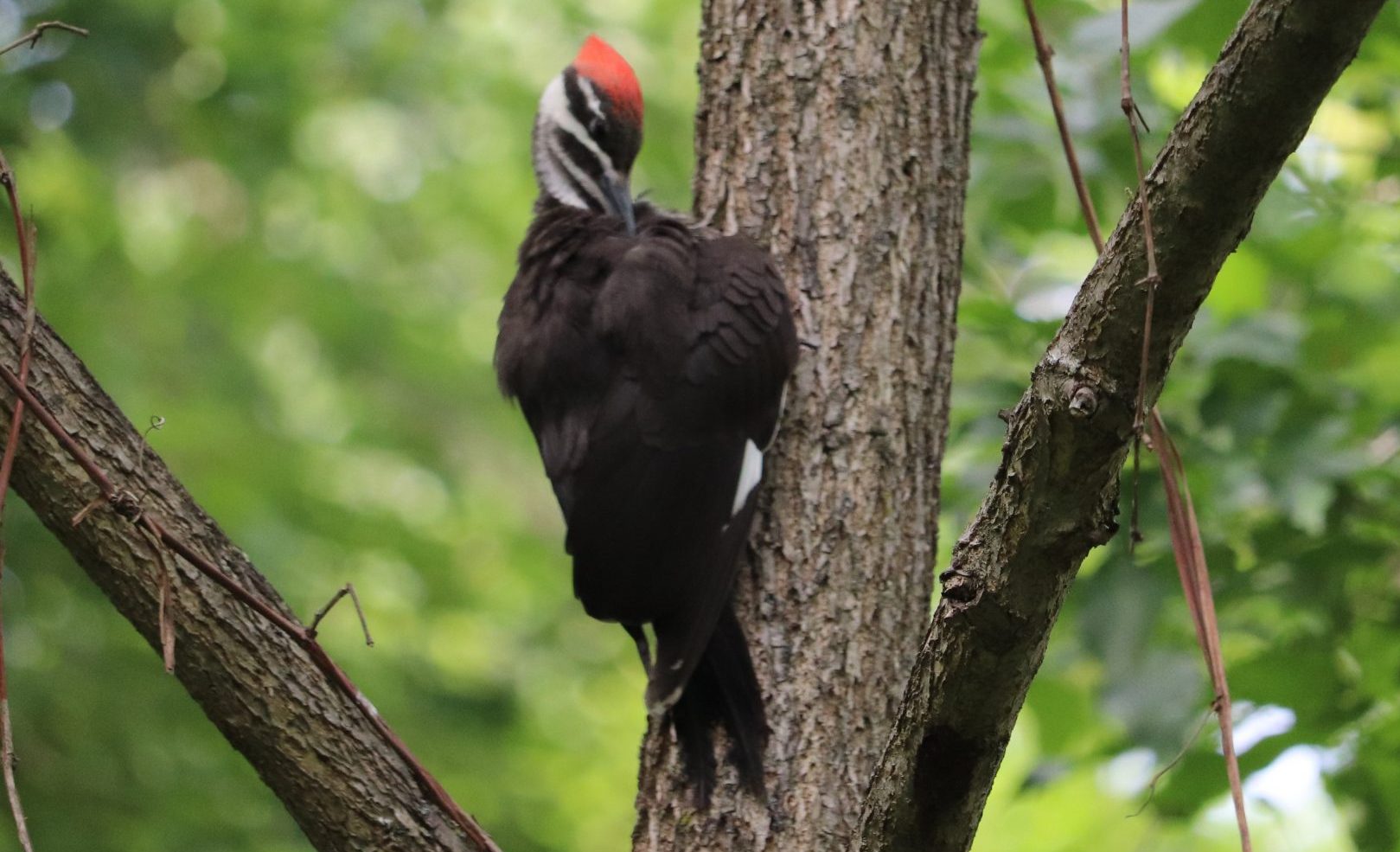
Pileated Woodpecker
Just remember, if you plant native plants which then attracts the insects, you will for sure encounter a plentiful amount of birds flying and foraging about your yard. Then, maybe you might even become a bird nerd like myself and count the days on the calendar between migrations and new visitors showing up to share your home!
Here is a great resource to find native plants based on where you live (via your ZIP code) from the National Audubon Society: https://www.audubon.org/native-plants
Happy Birding and Happy Yardening! And don’t forget to do the weeding. It keeps you grounded!
I even had a peacock pass through once. (He had escaped from our neighbor’s farm. And was rescued very quickly.)
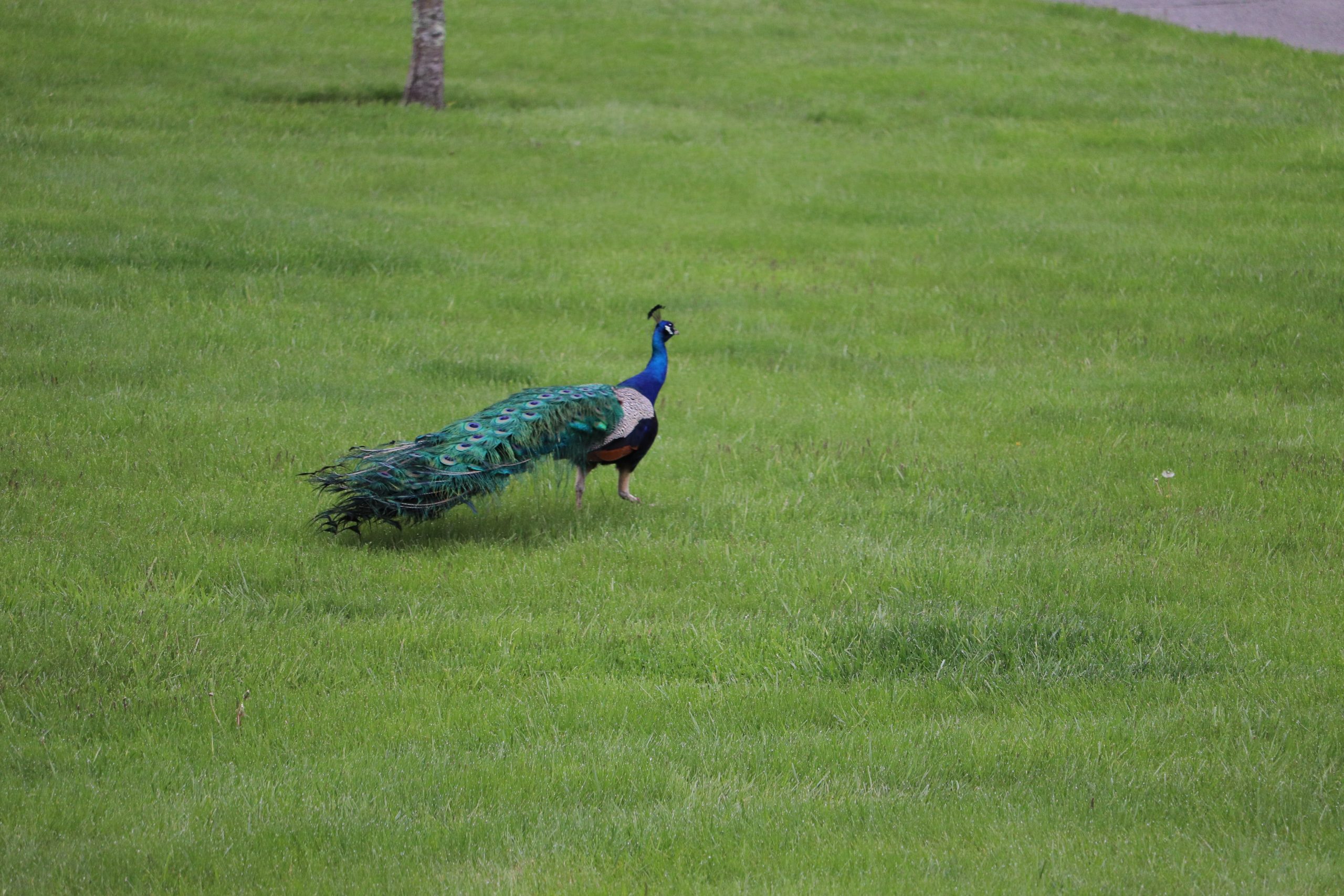
One response
[…] A common visitor to backyards all over the United States with quite an extensive range, the American Goldfinch also happens to be the state bird of New Jersey (and Iowa and Washington too). But you can attract them to your yard not just by bird seed in a store bought alone. This one is foraging on a seed head of a Black-eyed Susan. I saw one feeding on a dandelion flower too! Here’s another post I wrote about attracting birds to your yard. […]